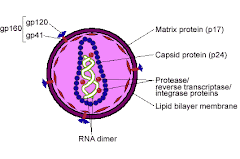
"When we hear the term "rehab," we usually think of a residential treatment facility where celebrities go to "dry out." As it turns out, there are a variety of types of programs, and even more methods of treatment.
The success of prison rehab programs has shown that
involuntary treatment can be effective in breaking addiction.
There are several settings where treatment can take place. Hospitals often serve as rehab facilities, treating people who come into the emergency room with an acute drug overdose. This treatment usually doesn't last long; however, some hospitals do offer longer-term and more expansive treatment programs. Rehabs can range in appearance from a very clinical setting in a prison to a luxurious day spa on an exotic island, and everything in between. What most treatment facilities have in common is that they are divided by the length of the service they offer.
Treatment generally takes place as inpatient, outpatient or partial-hospitalization:
* Inpatient treatment (also called residential) - the addict is cared for 24 hours a day, seven days a week. Inpatient rehab can be offered either as short-term (usually 28 days) or long-term, which consists of residential treatment for six months or more. Often, long-term inpatient treatment is court-ordered, and, in addition to treatment, includes resocialization, the process where patients learn to behave as a normally functioning member of society again.
* Outpatient treatment - takes place on a visitation basis. In this setting, a patient may come to a rehab facility to attend support groups, receive medication (such as methadone for the treatment of heroin), and receive counseling. In outpatient treatment, an addict usually goes about his daily life and sleeps at home.
* Partial-hospitalization - a combination of both inpatient and outpatient treatments. The addict receives treatment during the day and goes home at night. This treatment setting somewhat resembles the 9-to-5 work schedule most people keep, but rather than going to work, the addict goes to rehab.
Prison is another place that can serve as a rehab treatment center. In this setting, substance-dependent patients are removed from the general prison population to diminish the possibility that they'll be exposed to drugs or alcohol. Treatment facilities are becoming popular in American prisons, as they have increasingly been shown to be effective.
Regardless of whether treatment is received in prison or in a spa, the treatment programs are similarly structured."
Note: Convicted felons are usually tested, for drug use, before they are sentenced to prison. Son of convicted operative and politician wannabe, Stan "Pampy" Barre, has already expressed fear that his hair follicles will be tested.
Friday, September 14, 2007
How "Rehab" Works
Blogs'FamilyCorruptionInTheBigEasy||
FamilyCorruptionInTheBigEasy: Part 2
Posted by
Boop
at
12:26 AM
![]()
Labels: drug rehab, prison system, treatment
Subscribe to:
Post Comments (Atom)


















No comments:
Post a Comment